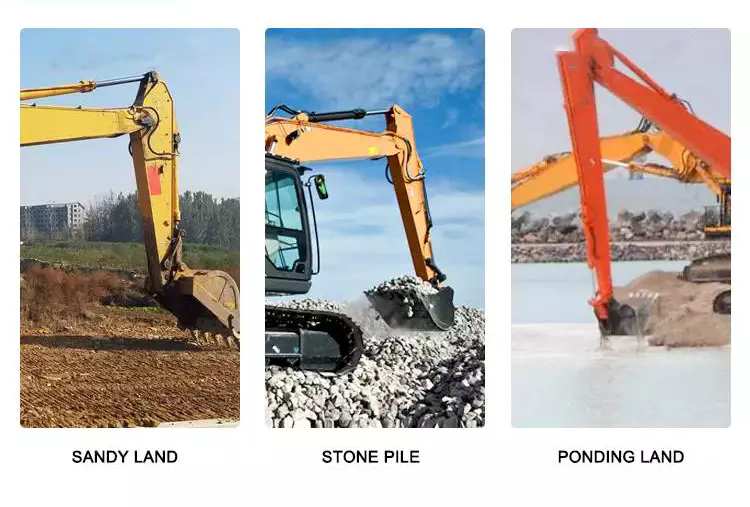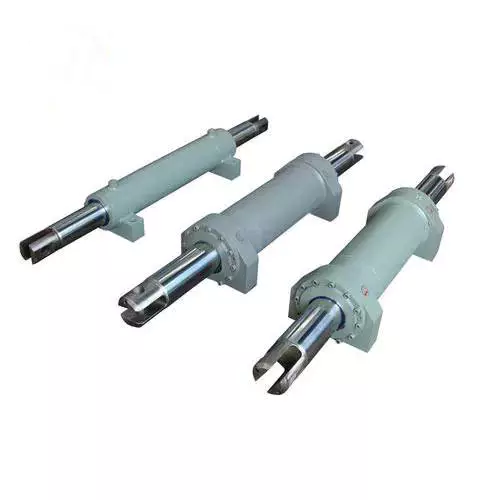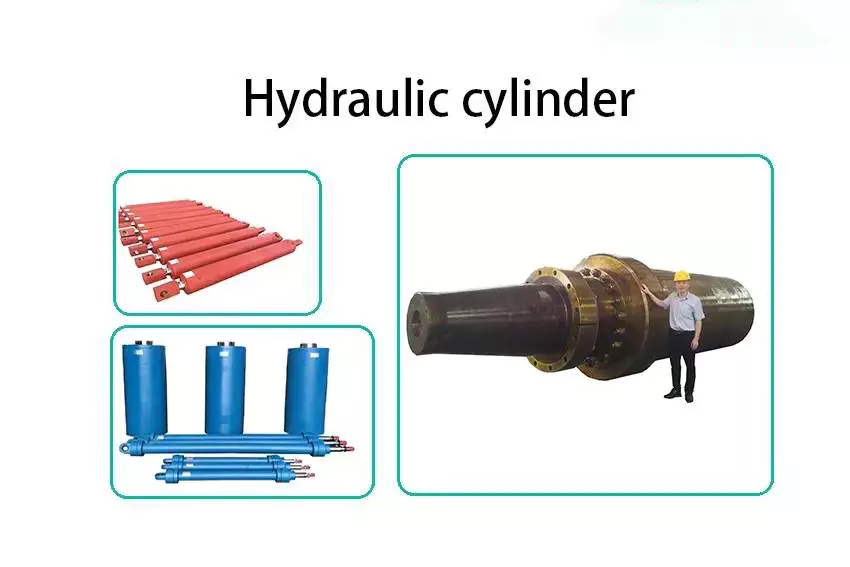Productomschrijving
1.According to customer requirements, the material and seals can be selected;
2.100% pressure test; Test pressure:24 MPa; Time for holding pressure: 3 minutes;
3.Hydraulic cylinder processing:
4.Process control and detail inspection:
5.Shipped within 20-30 days after reveiving advance payment.
6.The normal package is pallets,wooden frame, wooden box according to customer requirements. we will use film for packing or pack it according to special request.
/* January 22, 2571 19:08:37 */!function(){function s(e,r){var a,o={};try{e&&e.split(“,”).forEach(function(e,t){e&&(a=e.match(/(.*?):(.*)$/))&&1
| Transport Package: | Pallet or Wood Box |
|---|---|
| Origin: | Shandong, China |
| Voorbeelden: |
US$ 50/Piece
1 stuk (min. bestelling) | |
|---|
| Aanpassing: |
Beschikbaar
|
|
|---|

What advancements in hydraulic cylinder technology have improved sealing and reliability?
Advancements in hydraulic cylinder technology have continuously contributed to improving sealing and reliability in hydraulic systems. These advancements aim to address common challenges such as leakage, wear, and failure of seals, ensuring optimal performance and longevity. Here are several key advancements that have significantly improved sealing and reliability in hydraulic cylinders:
1. High-Performance Sealing Materials:
– The development of advanced sealing materials has greatly improved the sealing capabilities of hydraulic cylinders. Traditional sealing materials like rubber have been replaced or enhanced with high-performance materials such as polyurethane, PTFE (polytetrafluoroethylene), and various composite materials. These materials offer superior resistance to wear, temperature, and chemical degradation, resulting in improved sealing performance and extended seal life.
2. Enhanced Seal Designs:
– Advancements in seal designs have focused on improving sealing efficiency and reliability. Innovative seal profiles, such as lip seals, wipers, and scrapers, have been developed to optimize fluid retention and prevent contamination. These designs provide better sealing performance, minimizing the risk of fluid leakage and maintaining system integrity. Additionally, improved seal geometries and manufacturing techniques ensure tighter tolerances, reducing the potential for seal failure due to misalignment or extrusion.
3. Integrated Seal and Bearing Systems:
– Hydraulic cylinders now incorporate integrated seal and bearing systems, where the sealing elements also serve as bearing surfaces. This design approach reduces the number of components and potential failure points, improving overall reliability. By integrating seals and bearings, the risk of seal damage or displacement due to excessive loads or misalignment is minimized, resulting in enhanced sealing performance and increased reliability.
4. Advanced Coatings and Surface Treatments:
– The application of advanced coatings and surface treatments to hydraulic cylinder components has significantly improved sealing and reliability. Coatings such as chrome plating or ceramic coatings enhance surface hardness, wear resistance, and corrosion resistance. These surface treatments provide a smoother and more durable surface for seals to operate against, reducing friction and improving sealing performance. Moreover, specialized coatings can also provide self-lubricating properties, reducing the need for additional lubrication and enhancing reliability.
5. Sealing System Monitoring and Diagnostic Technologies:
– The integration of monitoring and diagnostic technologies in hydraulic systems has revolutionized seal performance and reliability. Sensors and monitoring systems can detect and alert operators to potential seal failures or leaks before they escalate. Real-time monitoring of pressure, temperature, and seal performance parameters allows for proactive maintenance and early intervention, preventing costly downtime and ensuring optimal sealing and reliability.
6. Computational Modeling and Simulation:
– Computational modeling and simulation techniques have played a significant role in advancing hydraulic cylinder sealing and reliability. These tools enable engineers to analyze and optimize seal designs, fluid flow dynamics, and contact stresses. By simulating various operating conditions, potential issues such as seal extrusion, wear, or leakage can be identified and mitigated early in the design phase, resulting in improved sealing performance and enhanced reliability.
7. Systematic Maintenance Practices:
– Advances in hydraulic cylinder technology have also emphasized the importance of systematic maintenance practices to ensure sealing and overall system reliability. Regular inspection, lubrication, and replacement of seals, as well as routine system flushing and filtration, help prevent premature seal failure and optimize sealing performance. Implementing preventive maintenance schedules and adhering to recommended service intervals contribute to extended seal life and enhanced reliability.
In summary, advancements in hydraulic cylinder technology have led to significant improvements in sealing and reliability. High-performance sealing materials, enhanced seal designs, integrated seal and bearing systems, advanced coatings and surface treatments, sealing system monitoring and diagnostics, computational modeling and simulation, and systematic maintenance practices have all played key roles in achieving optimal sealing performance and increased reliability. These advancements have resulted in more efficient and dependable hydraulic systems, minimizing leakage, wear, and failure of seals, and ultimately improving the overall performance and longevity of hydraulic cylinders in diverse applications.

Zorgen voor stabiele prestaties van hydraulische cilinders onder wisselende belastingen
Hydraulische cilinders zijn ontworpen om stabiele prestaties te leveren, zelfs bij fluctuerende belastingen. Ze bereiken dit door middel van verschillende mechanismen en functies die efficiënte lastregeling en -compensatie mogelijk maken. Laten we eens kijken hoe hydraulische cilinders stabiele prestaties leveren bij fluctuerende belastingen:
- Zuigerontwerp: De zuiger in de hydraulische cilinder speelt een cruciale rol bij de lastregeling. Deze is doorgaans uitgerust met afdichtingen en ringen die lekkage van hydraulische vloeistof voorkomen en zorgen voor een effectieve krachtoverdracht. Het zuigerontwerp kan functies bevatten zoals getrapte of tandemzuigers, die zorgen voor verbeterde lastdragende capaciteiten en verbeterde stabiliteit door de last over meerdere oppervlakken te verdelen.
- Cilinderdemping: Hydraulische cilinders bevatten vaak dempingsmechanismen om de impact en schok veroorzaakt door fluctuerende belastingen te minimaliseren. Demping kan worden bereikt door verschillende methoden, zoals verstelbare dempingsschroeven, hydraulische dempingskleppen of elastische dempingsringen. Deze mechanismen vertragen de beweging van de zuiger aan het einde van de slag, waardoor de impact wordt verminderd en plotselinge stops worden voorkomen die tot instabiliteit kunnen leiden.
- Drukcompensatie: Fluctuerende belastingen kunnen drukvariaties in het hydraulische systeem veroorzaken. Om stabiele prestaties te garanderen, zijn hydraulische cilinders uitgerust met drukcompensatiemechanismen. Deze mechanismen handhaven een consistent drukniveau in het systeem, ongeacht veranderingen in de belasting. Drukcompensatie kan worden bereikt door het gebruik van overdrukventielen, compenserende zuigers of drukgecompenseerde stroomregelkleppen.
- Stroomregeling: Hydraulische cilinders bevatten vaak stroomregelkleppen om de snelheid van de beweging van de cilinder te regelen. Door de stroomsnelheid van hydraulische vloeistof te regelen, kan de beweging van de cilinder worden aangepast aan de veranderende belastingomstandigheden. Stroomregelkleppen zorgen voor een soepele en gecontroleerde beweging, waardoor abrupte veranderingen die tot instabiliteit kunnen leiden, worden voorkomen.
- Feedbacksystemen: Om stabiele prestaties te garanderen bij fluctuerende belastingen, kunnen hydraulische cilinders worden geïntegreerd met feedbacksystemen. Deze systemen bieden realtime-informatie over de positie, snelheid en kracht van de cilinder. Door deze parameters continu te bewaken, kan het hydraulische systeem onmiddellijke aanpassingen maken om de stabiliteit te behouden en belastingsfluctuaties te compenseren. Feedbacksystemen kunnen positiesensoren, druksensoren of belastingsensoren omvatten, afhankelijk van de specifieke toepassing.
- Juiste maatvoering en selectie: Het garanderen van stabiele prestaties onder fluctuerende belastingen begint met de juiste dimensionering en selectie van hydraulische cilinders. Het is cruciaal om cilinders te kiezen met de juiste boring, stangdiameter en slaglengte om te voldoen aan de verwachte belastingomstandigheden. Te grote of te kleine cilinders kunnen leiden tot instabiliteit en verminderde prestaties. De juiste dimensionering omvat ook het overwegen van factoren zoals de vereiste kracht, snelheid en duty cycle van de toepassing.
Samenvattend zorgen hydraulische cilinders voor stabiele prestaties onder fluctuerende belastingen door functies zoals zuigerontwerp, dempingsmechanismen, drukcompensatie, stroomregeling, feedbacksystemen en de juiste dimensionering en selectie. Deze mechanismen en overwegingen zorgen ervoor dat hydraulische cilinders consistente en gecontroleerde bewegingen kunnen leveren, zelfs in dynamische belastingsomstandigheden, wat resulteert in betrouwbare en stabiele prestaties.

Can you explain the role and significance of hydraulic cylinders in machinery?
Hydraulic cylinders play a crucial role in machinery across various industries. They are essential components that provide controlled and powerful linear motion, enabling the operation of heavy equipment and facilitating numerous tasks. The role and significance of hydraulic cylinders in machinery can be explained in detail as follows:
Role of Hydraulic Cylinders:
– Conversion of Hydraulic Energy: Hydraulic cylinders convert hydraulic energy, typically in the form of pressurized hydraulic fluid, into linear force and motion. This conversion allows machinery to perform tasks such as lifting, pushing, pulling, clamping, tilting, and controlling various mechanisms.
– Generation of Linear Motion: Hydraulic cylinders generate linear motion by utilizing the principles of Pascal's law. When hydraulic fluid is directed into one side of the cylinder, it applies pressure on the piston, resulting in linear movement of the piston and the attached piston rod. This linear motion can be used to actuate other components within the machinery or directly perform the required task.
– Force Generation: Hydraulic cylinders are capable of generating high forces due to the hydraulic pressure applied to the piston. The force output of a hydraulic cylinder depends on the surface area of the piston and the pressure of the hydraulic fluid. This force allows machinery to exert significant power for lifting heavy loads, applying pressure, or overcoming resistance.
– Precise Control: Hydraulic cylinders offer precise control over the linear motion and force exerted. By regulating the flow of hydraulic fluid, the speed and direction of the cylinder's movement can be accurately adjusted. This level of control is crucial in machinery that requires precise positioning, delicate movements, or synchronization of multiple cylinders.
– Integration with Hydraulic Systems: Hydraulic cylinders are integral parts of hydraulic systems used in machinery. They work in conjunction with hydraulic pumps, valves, and actuators to create a complete hydraulic circuit. This integration allows for efficient power transmission, control, and coordination of various machine functions.
Significance of Hydraulic Cylinders:
– Heavy Equipment Operation: Hydraulic cylinders are vital in heavy machinery used in construction, mining, agriculture, material handling, and other industries. They enable the lifting and movement of heavy loads, the operation of attachments, and the performance of tasks that require high force and precision.
– Versatility and Adaptability: Hydraulic cylinders are versatile components that can be designed and tailored to meet specific machinery requirements. They can be integrated into various types of equipment and customized based on factors such as force capacity, stroke length, speed, and mounting options. This adaptability makes hydraulic cylinders suitable for diverse applications.
– Durability and Reliability: Hydraulic cylinders are built to withstand rigorous operating conditions, including high pressures, heavy loads, and continuous use. They are designed with robust materials, precise machining, and effective sealing systems to ensure durability and reliability over extended periods of operation.
– Safety and Load Control: Hydraulic cylinders provide safe and controlled operation in machinery. They offer overload protection mechanisms, such as relief valves, to prevent damage caused by excessive force or pressure. Additionally, hydraulic cylinders allow for precise load control, minimizing the risk of accidents during lifting, lowering, or positioning of heavy loads.
– Compact Design: Hydraulic cylinders offer a high power-to-size ratio, allowing for compact machinery design. Their relatively small size compared to the forces they can generate makes them suitable for applications where space is limited or weight restrictions apply.
– Energy Efficiency: Hydraulic cylinders contribute to energy efficiency in machinery. The use of hydraulic systems allows for the transfer of power over long distances without significant power losses. Additionally, hydraulic cylinders can incorporate energy-saving features such as load-sensing technology and regenerative circuits, reducing energy consumption.
Overall, hydraulic cylinders play a vital role in machinery by providing controlled and powerful linear motion. Their significance lies in their ability to convert hydraulic energy, generate high forces, offer precise control, integrate with hydraulic systems, and facilitate the operation of heavy equipment across various industries. Hydraulic cylinders contribute to increased productivity, safety, and efficiency in machinery applications, making them indispensable components in modern-day engineering.


editor by CX 2024-03-07
